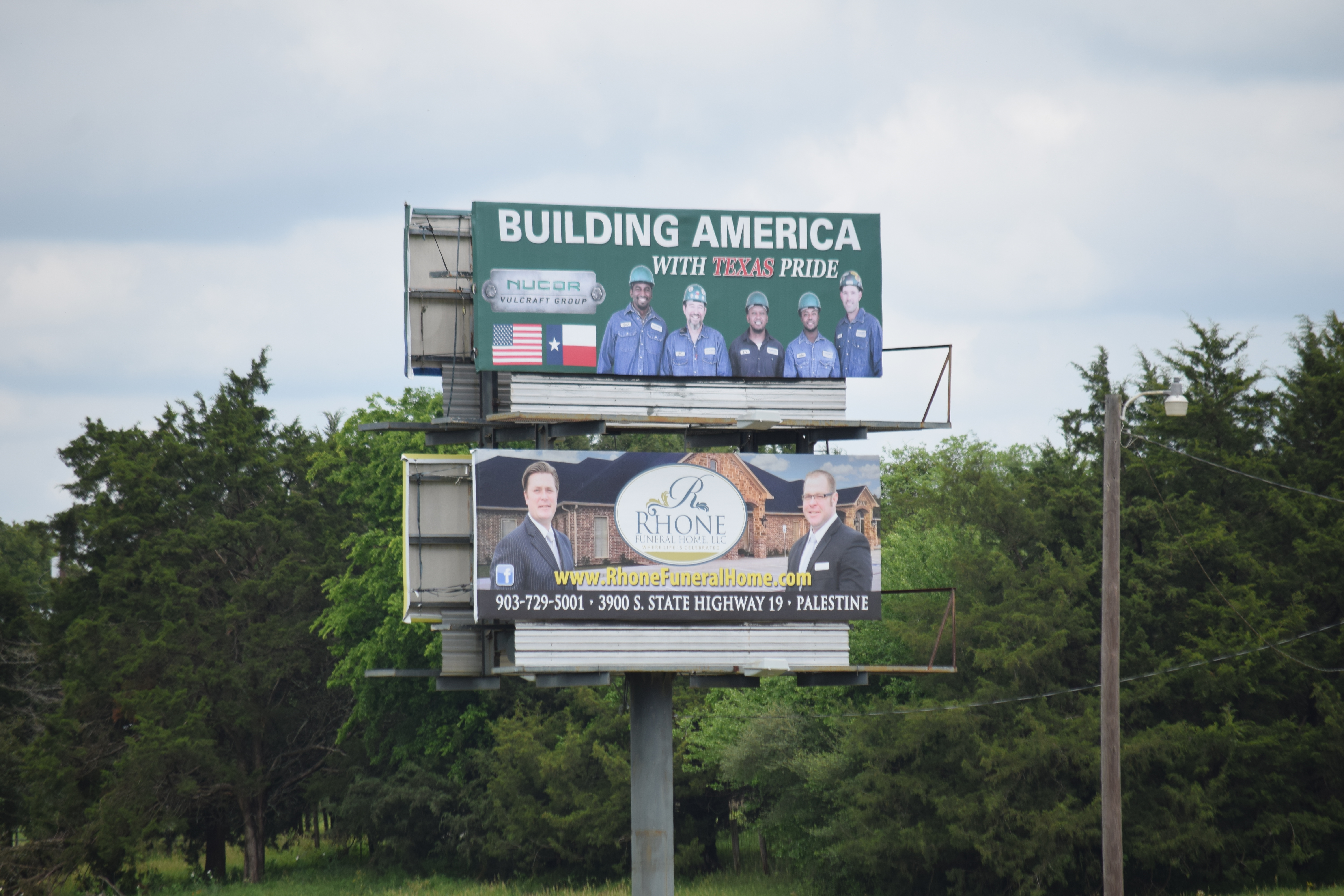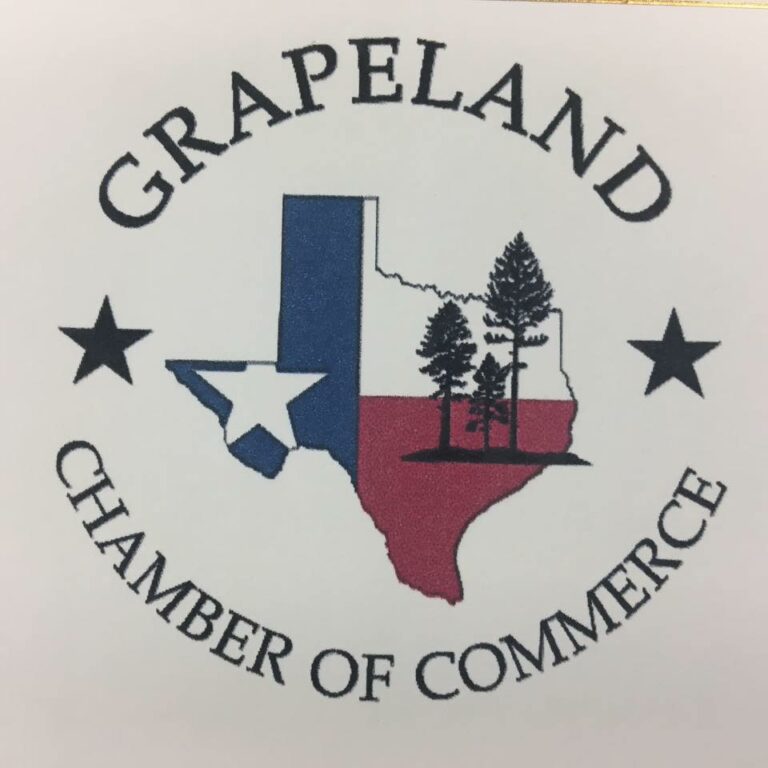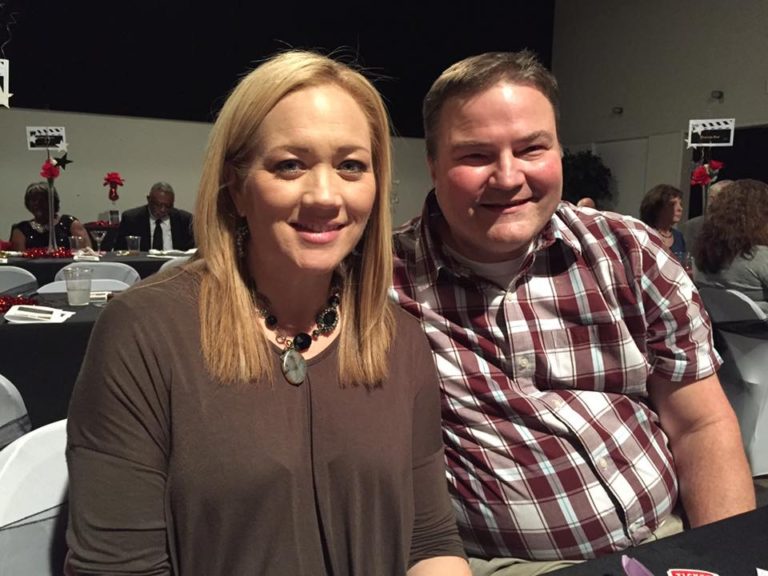The Great Billboard Debate

By Will Johnson
Messenger Reporter
CROCKETT – In 2015, Crockett was named the poorest town in Texas by the website 24/7 Wall St. By 2017, the “Paradise in the Pines” was no longer number one (fortunately) but problems still persist. A crumbling infrastructure, a budget stretched to the breaking point, water issues and a limited job market have kept Crockett from blossoming into its full potential.
While it may not solve all of Crockett’s problem, a significant boost in city revenue would definitely help erase some of the factors holding the municipality back.
During a recent meeting of the Crockett City Council, this issue of how to generate more revenue for the City of Crockett was addressed and showed the hypocrisy prevalent within the city limits.
The matter was cloaked as a discussion on lifting a moratorium on the construction of billboards and if approved would “… permit new off-premises signs and require a specific use permit for each sign.”
The moratorium was put in place under Chapter 13, Section 201 which states – in part – “No new off-premises sign shall be erected inside the city limits of the City of Crockett.”
If you don’t believe the City of Crockett is in trouble financially, attend a budget meeting. One statement that will be heard by every department head – over and over again – is, “We don’t have the money.”
So what does this have to do with a billboard?
According to the 2013 Arbitron Out of Home (OOH) Advertising Study:
- Three-quarters of total U.S. adults have noticed advertising on static billboards, digital billboards, sides of public buses, bus shelters, taxi cabs, commuter rails, subways or any street level advertising such as kiosks or newspaper stands in the past month; viewership among travelers is 84%.
- Billboards are the most viewed OOH media. Roughly two-thirds of travelers have seen a billboard advertisement in the past month and over 4 in 10 have viewed a digital billboard.
- Engagement with billboards is considerably high. Over 8 in 10 billboard viewers make a point to look at the advertising message at least some of the time; nearly half look at the billboard ad each time or almost each time they noticed one.
The 2013 OOH indicated this translated to, “Nearly four in 10 (39%) adults who have viewed a billboard or other out-of-home media in the past month have visited a store they’ve seen advertised. Forty percent have visited an advertised restaurant while 39 percent have visited an advertised store.”
Famed economist John Maynard Keynes coined the phrase the “local multiplier effect” in which he describes how many times a dollar is turned over when spent in a local economy. The stock answer is seven and while that number can and has been argued, recent studies conducted in Texas and Maine show there is quite a bit of truth to the argument.
According to the studies, published on the website, www.bookweb.org, locally owned businesses were compared to similar nationally owned businesses. Both studies reached similar conclusions in that $100 spent at a national retailer yielded a return of about $15.00 to the local economy. However when that same $100 was spent with a local retailer it returned about $45 or 3 times as much income to the local economy.
Triple the money because of billboard advertising? Perhaps.
Another factor to consider in lifting the billboard moratorium is the cut backs made by the state legislature. While the federal government is trying to pass costs to the states, the states are trying to pass costs to the local level.
The biggest source of revenue generation for cities and counties is the property tax. While no one likes to pay taxes, the revenue generated goes to pay for law enforcement, fire protection, road and bridge repair, other infrastructure costs, parks and water services.
House Bill 15, currently being debated in the Texas Legislature, would reduce the maximum increase in taxes for a property — from eight percent to now five percent. It would also require local governments to annually publish a “No New Taxes Rate” — which is the rate that would raise the same amount of money as the previous year.
While it looks good on face value, it doesn’t answer one very important question. If you can only generate so much money through your primary revenue stream and you live in a city like Crockett where maintaining the status quo has resulted in a crumbling infrastructure being held together by duct tape and prayer, where is the revenue going to come from to move the city forward?
Where will the money come from to repair the streets? Where will the money come from to fund the police and fire departments? Where will the money come from to provide clean, safe drinking water and provide workable sewers?
If you have the potential for a new revenue stream, why would you want to turn it off unless you are wanting to maintain a dilapidated status quo?
The bottom line is this, if you don’t have the money coming in that means services will have to be cut and jobs will be lost just so the city can function on a day to day basis.
Another line of reason for lifting the moratorium is the tax dollars a billboard structure itself provides.
In another article in this edition of The Messenger, Houston County Appraisal District Chief Appraiser Carey Minter stated billboards are taxed in the same way as any other property. They are evaluated, usually based on the cost of construction, and taxes are levied at the same rate as those of any other private property such as homes and businesses, business furnishings, business vehicles and other business property.
The cost of building a small “sub-standard” billboard of wooden construction could range from $750.00 to $3000.00. TX Dot regulations call for billboard construction applications to denote a prospective billboard as being of wooden or steel materials. Either is acceptable according to their standards.
A “stacked” steel structure, with lights, could cost in the neighborhood of $30,000.00 to $150,000.00, depending on its height, the size of its advertising faces and other technical issues. That means the taxable value of each structure could rise to that of many homes located within the City of Crockett.
During the council meeting, Precinct One Council Member Jeanie Julian commented she thought billboards were an eyesore.
“I think they detract from what we have,” she said. “I would rather see businesses in places where those billboards are. I think what we have now, we should just keep and not detract anymore.”
Really? If you would like to see an eyesore, travel down Fourth Street and look at the rundown, abandoned houses or the old Sonic. The question needs to be asked yet again, if you have the potential for a new revenue stream, why would you want to turn it off unless you are wanting to maintain a dilapidated status quo?
As the executive director of the Crockett Area Chamber of Commerce, she should be promoting local businesses not seeking to limit them.
According to the American Chamber of Commerce Executives, “A chamber of commerce seeks to further the business interests of its community, while also advancing its community, state, region or nation. Although chambers differ, they usually have the following goals: building attractive communities; ensuring the advancement of the community via a pro-business climate; promoting the community; and representing the voice of the business community.”
Will Johnson may be contacted via e-mail at [email protected].







5
1.5